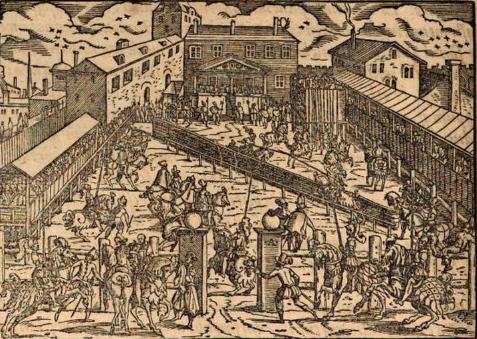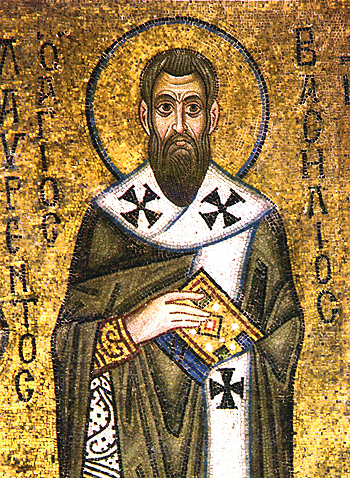|
Contessa Entellina
Contessa Entellina () is a small ''comune'' in the Metropolitan City of Palermo, in Sicily, southern Italy. Is located in the "Valle del Belìce" at above sea level in the mountains called ''Brinjat'', is situated 80 km from Palermo. The country, along with Piana degli Albanesi and Santa Cristina Gela, is among the three ethnic communities of Arbëreshë of Sicily, who still speak Albanian, carefully preserve the Orthodox rite, the Albanian costumes, musical and gastronomic traditions of the ancient Albania. History The foundation is attributed to about 1450 on the ruins of a remote farmhouse seniority, the "Comitissa", but the chapter officers, the granting of fiefs, were built in 1520, when he started the rebuilding, upgrading and restocking of Albanians from Albania and subsequently also by the southern Morea, from Albanian communities where they lived from 1300. In ancient times it was near them the ancient Elymian city of '' Entella'', in fact, with the discov ... [...More Info...] [...Related Items...] OR: [Wikipedia] [Google] [Baidu] |
Sicily
Sicily (Italian language, Italian and ), officially the Sicilian Region (), is an island in the central Mediterranean Sea, south of the Italian Peninsula in continental Europe and is one of the 20 regions of Italy, regions of Italy. With 4.7 million inhabitants, including 1.2 million in and around the capital city of Palermo, it is both the largest and most populous island in the Mediterranean Sea. Sicily is named after the Sicels, who inhabited the eastern part of the island during the Iron Age. Sicily has a rich and unique culture in #Art and architecture, arts, Music of Sicily, music, #Literature, literature, Sicilian cuisine, cuisine, and Sicilian Baroque, architecture. Its most prominent landmark is Mount Etna, the tallest active volcano in Europe, and one of the most active in the world, currently high. The island has a typical Mediterranean climate. It is separated from Calabria by the Strait of Messina. It is one of the five Regions of Italy#Autonomous regions with s ... [...More Info...] [...Related Items...] OR: [Wikipedia] [Google] [Baidu] |
Byzantine Rite
The Byzantine Rite, also known as the Greek Rite or the Rite of Constantinople, is a liturgical rite that is identified with the wide range of cultural, devotional, and canonical practices that developed in the Eastern Christianity, Eastern Christian church of Constantinople. The canonical hours are extended and complex, lasting about eight hours (longer during Great Lent) but are abridged outside of large Monastery, monasteries. An iconostasis, a partition covered with icons, separates Sanctuary#Sanctuary as area around the altar, the area around the altar from the nave. The Sign of the cross#Eastern Orthodoxy, sign of the cross, accompanied by bowing, is made very frequently, e.g., more than a hundred times during the Divine Liturgy#Byzantine Rite, divine liturgy, and there is prominent veneration of icons, a general acceptance of the congregants freely moving within the church and interacting with each other, and distinctive traditions of liturgical chanting. Some traditional ... [...More Info...] [...Related Items...] OR: [Wikipedia] [Google] [Baidu] |
George Kastrioti Skanderbeg
Gjergj Kastrioti (17 January 1468), commonly known as Skanderbeg, was an Albanian feudal lord and military commander who led a rebellion against the Ottoman Empire in what is today Albania, North Macedonia, Greece, Kosovo, Montenegro, and Serbia. A member of the noble Kastrioti family, Skanderbeg was sent as a hostage to the Ottoman court. He graduated from the Enderun School and entered the service of the Ottoman sultan Murad II () for the next twenty years. His rise through the ranks culminated in his appointment as of the Sanjak of Dibra in 1440. During the Battle of Nish in 1443, he deserted the Ottomans and became the ruler of Krujë and nearby areas extending from Petrelë to Modrič. In March 1444, he established the League of Lezhë, with support from local noblemen, and unified the Albanian principalities. In 1451, through the Treaty of Gaeta, Skanderbeg recognized ' the sovereignty of the Kingdom of Naples over Albania, ensuring a protective alliance, althou ... [...More Info...] [...Related Items...] OR: [Wikipedia] [Google] [Baidu] |
Eparchy Of Piana Degli Albanesi
The Eparchy of Piana degli Albanesi (; ) is an eparchy (diocese) of the Italo-Albanian Catholic Church, an Eastern Catholic church ''sui iuris'' of Byzantine Rite, covering the island of Sicily in Italy. History On 6 February 1784, was established the Ordinariate of Silicia, the first jurisdiction with on ordinary for this particular church ''sui iuris'', and appointed to it the first titular bishop of the Byzantine Rite for the Albanians of Sicily: Giorgio Stassi, Titular Bishop of Lampsacus. Before, the Albanians faithful and their Orthodox priests they had no right and were at risk in assimilation in the Roman rite. On 26 October 1937, the Eparchy of Piana dei Greci was created by promoting the Ordinariate of Silicia and transferring to it territories from the Metropolitan Archdiocese of Palermo and Metropolitan Archdiocese of Monreale (both on Sicily). On 25 October 1941, the Eparchy (Diocese) of Piana dei Greci was renamed as Eparchy of Piana degli Albanesi / Eparki ... [...More Info...] [...Related Items...] OR: [Wikipedia] [Google] [Baidu] |
Bino (singer)
Bino (born Benedetto Arico; * 24 April 1953 in Contessa Entellina; † 19 October 2010 in Contessa Entellina) was an Italian pop singer. Early life and career Bino (real name Benedetto Arico) first studied architecture in order to take over his father's company. He returned to Italy and came back to Germany in 1975 as a musician, first to Schopfheim in the Black Forest. In nearby Bad Säckingen he became a member of the existing group "I Figli Di Yuma" with which he toured the region and through Switzerland. Then he came to Oldenburg, where he once worked as an ice cream vendor, sometimes as a singer at festivals and on to Hamburg, where producer Rainer Felsen from Pino Music first took notice of him. In 1978, working with Drafi Deutscher and Mike Mareen, Bino recorded '' Mama Leone''., a song composed by German pop composer and singer Drafi Deutscher and was first sung in German version by Ruth Händel in 1976, but was not a success in this version or in the version by Mike Maree ... [...More Info...] [...Related Items...] OR: [Wikipedia] [Google] [Baidu] |
Liturgy
Liturgy is the customary public ritual of worship performed by a religious group. As a religious phenomenon, liturgy represents a communal response to and participation in the sacred through activities reflecting praise, thanksgiving, remembrance, supplication, or repentance. It forms a basis for establishing a relationship with God. Technically speaking, liturgy forms a subset of ritual. The word ''liturgy'', sometimes equated in English as " service", refers to a formal ritual enacted by those who understand themselves to be participating in an action with the divine. Etymology The word ''liturgy'' (), derived from the technical term in ancient Greek (), ''leitourgia'', which means "work or service for the people" is a literal translation of the two affixes λήϊτος, "leitos", derived from the Attic form of λαός ("people, public"), and ἔργον, "ergon", meaning "work, service". In origin, it signified the often expensive offerings wealthy Greeks made in serv ... [...More Info...] [...Related Items...] OR: [Wikipedia] [Google] [Baidu] |
Giuseppe Schirò (junior)
Giuseppe Schirò Junior (1905 – 1984), was an Italian scholar and literary historian. Schirò was of Arbëreshë descent. He was born in Contessa Entellina (), Sicily. He was referred as "junior" to distinguish him from the "Senior", the Arberesh poet Giuseppe Schirò (1865 – 1927). Schirò studied at the Corsini College in San Demetrio Corone in Calabria. He worked as a teacher in Padua and Rome. Schirò's wrote on Albanian culture, the first work appeared in the 1940s. He is remembered in particular for his ''"Storia della letteratura albanese"'' ("History of Albanian Literature") published in Firenze in 1959, being one of the most reliable histories of Albanian literature Albanian literature stretches back to the Middle Ages and comprises those literary texts and works written in Albanian language, Albanian. It may also refer to literature written by Albanians in Albania, Kosovo and the Albanian diaspora particul .... References 1905 births 1984 deaths Peo ... [...More Info...] [...Related Items...] OR: [Wikipedia] [Google] [Baidu] |
Basilian Monks
Basilian monks are Greek Catholic monks who follow the rule of Basil the Great, bishop of Caesarea (330–379). The term 'Basilian' is typically used only in the Catholic Church to distinguish Greek Catholic monks from other forms of monastic life in the Catholic Church. In the Eastern Orthodox Church, all monks follow the Rule of Saint Basil, and so do not distinguish themselves as 'Basilian'. The monastic rules and institutes of St. Basil are important because their reconstruction of monastic life remains the basis for most Eastern Orthodox and some Greek Catholic monasticism. Benedict of Nursia, who fulfilled much the same function in the West, took his ''Regula Benedicti'' from the writings of Basil and other earlier Church Fathers. Rule of St. Basil Under the name of Basilians are included all religious following the Rule of St. Basil. [...More Info...] [...Related Items...] OR: [Wikipedia] [Google] [Baidu] |
Arbëresh Language
Arbëresh (; also known as ''Arbërisht'') are the Albanian linguistic varieties spoken by the Arbëreshë people of Italy, brought there by several migratory waves of Albanians from Albania and Greece since the Late Middle Ages. Arbëresh varieties are derived from the old Tosk Albanian varieties spoken in the south-western Balkans, and throughout the centuries they have developed in Italy in contact with the neighboring Italo-Romance-speaking communities. Other Tosk Albanian varieties from the Late Middle Ages referred to as Arvanitika (endonym: ''arbërisht'') are spoken in Greece by the Arvanites. ''E Mbësuame e Krështerë'' (1592) by Luca Matranga from Piana degli Albanesi is the earliest known Old Tosk text, a translation of a catechism book from Latin. The Arbëreshë people are bilingual, also speaking Italian. Arbëresh is classified as Definitely Endangered by the UNESCO ''Atlas of the World's Languages in Danger''. While Italian law protects the language and ... [...More Info...] [...Related Items...] OR: [Wikipedia] [Google] [Baidu] |
Nicola Chetta
Nicola Chetta, ( Arbërisht: Nikollë Keta; 12 July 1741 – 15 December 1803) was an Arbëresh writer and priest. He was born in Contessa Entellina, Sicily. He was educated at the Italo-Albanian Catholic seminary in Palermo. In 1777, Keta himself became rector of the seminary. As a poet, he wrote both religious and secular verse in Albanian and Greek, and has the honour of having composed the first Albanian sonnet A sonnet is a fixed poetic form with a structure traditionally consisting of fourteen lines adhering to a set Rhyme scheme, rhyming scheme. The term derives from the Italian word ''sonetto'' (, from the Latin word ''sonus'', ). Originating in ... (1777).Albanian literature: a short history Authors Robert Elsie, Centre for Albanian Studies (London, England) Publisher I.B.Tauris, 2005 , p. 46-4/ref> References 1740 births 1803 deaths People from Contessa Entellina Italian poets Italian male poets 18th-century Albanian people Albanian-language p ... [...More Info...] [...Related Items...] OR: [Wikipedia] [Google] [Baidu] |



